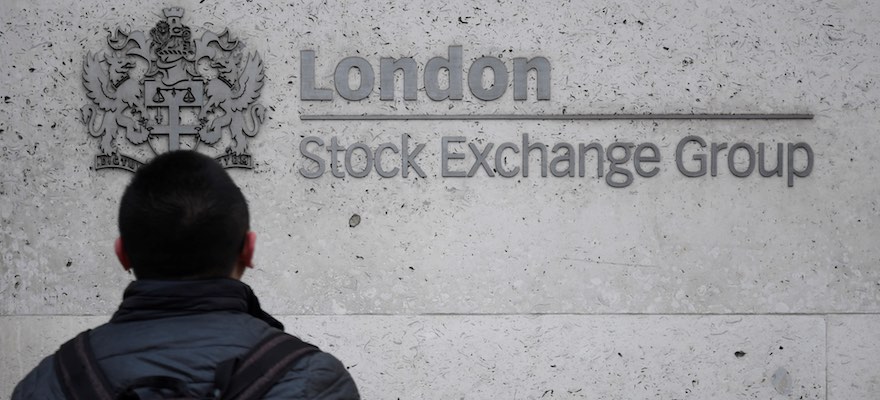What is the oil rally running on? "Gasoline!" cry bulls. "Fumes!" cry bears (and the odd headline writer).
To find out who is right, it is worth comparing this rally with the one that happened almost exactly a year earlier.
The similarity doesn't end there. This chart shows what happened with oil prices at the start of this year and last, but indexed:
The one big difference in that chart is the two sudden dips witnessed this year in January and last month, where oil fell into the mid-$20s a barrel. This is a portrait of a market trying to find a floor from which to bounce back. So maybe the floor has been found: Oil is now about 33 percent off its low point for 2016; last year's rally from March through June involved a gain of 41 percent. What's more, this rally copies last year's in another important aspect: Spot prices are rallying faster than futures, tightening the spread between them and indicating that excess supply is draining out of the market:
There is just one niggling problem with this interpretation: Excess supply isn't draining. Wednesday's weekly report from the Energy Information Administration showed a 10.4 million-barrel surge in U.S. commercial crude oil stocks, and they remain stuck at levels last seen when the Great Depression was getting underway. Take a look at how full the tanks at Cushing, OK -- the notional delivery point for Nymex oil futures -- are now compared with a year ago:
Tanks aren't just brimming in the U.S., but across the world. A year ago, the International Energy Agency was sounding this warning:
Barring any unforeseen disruption, OECD stocks may by mid-2015 come close to revisiting the all-time high of 2.83 billion barrels reached in August 1998, shortly before WTI prices sank to an average monthly low of $11.22/bbl.
As it turned out, commercial stocks of oil held in OECD countries had already risen above 2.9 billion barrels by the middle of 2015 -- and then kept going. Looking ahead from here, current supply and demand forecasts imply that, even if the much-vaunted freeze in OPEC production were to take hold, there may be a run on bathtubs to store barrels by the time summer is in full swing:
The bullish element in that chart is the way oil inventories level off in the second half of the year. When you're trying to get out from under 3.3 billion barrels, though, just leveling off doesn't really do the job. Moreover, these numbers assume no increase in Iranian production, despite the country's avowed intention to add to the flood. Progress on that front has been slow, as Bloomberg reported this week, but it is very early days, and any extra supply will add to the glut.
With a wary eye on Iran, oil bulls are keeping the other one trained more hopefully on the U.S. The EIA's weekly report also showed that domestic production in the week ending Feb. 26 had slipped by almost 250,000 barrels a day compared with a year earlier. Those initial weekly estimates are notoriously subject to revision. But with rig counts continuing to drop and yields on junk bonds issued by the exploration and production sector much higher than a year ago, a chaotic round of spending cuts and bankruptcies in the oil patch should take more supply off the market:
Don't forget, though, 2015 also kicked off with expectations of U.S. supply rolling over that didn't pan out. The IEA's projections for this year, which imply that flattening of oil inventories later this year but no real decline, already factor in a drop in U.S. production of almost 500,000 barrels a day. So it would require an even bigger drop to move the needle and justify a sustained rebound in oil prices. And as I wrote earlier this week, the E&P sector is, remarkably, selling new shares at a record pace -- partly because of the rally in oil prices and, by repairing balance sheets, working against that rally.
Oil's Bounce From Its 2016 Low
33%
On the other side of equation, it is hard to see how expectations around demand can be much more bullish than they were a year ago. Global demand last year trounced expectations, rising by 1.6 million barrels a day, almost double what the IEA was projecting in February 2015. The current forecast for this year is growth of 1.2 million barrels a day.
Last year's surprise was, to a large degree, home-grown: U.S. demand rose by 270,000 barrels a day, rather than an expected 150,000, as cheap gas and rising employment pushed Americans to drive more and fall back in love with trucks and SUVs. So the recent jump in demand at the pump has likely added fuel to the rally:
Starting from a higher base, this year's seasonal upswing in U.S. gasoline demand could take it back to the level last seen in that halcyon summer of 2007, especially with the latest jobs numbers adding a tailwind.
The missing factor this year, however, is another steep drop in pump prices. And just like the increments on the supply side, it would take a big upside surprise in demand to start eating into that glut of oil sitting in tanks. Assume that U.S. demand rose by another 270,000 barrels a day in 2016 versus the current projection of 110,000. All else equal, that would absorb about 59 million barrels over and above existing forecasts, leaving OECD stocks still at an unhealthy level of more than 3.2 billion barrels by the end of the year.
Indeed, hopes of America making oil great again fly in the face of the problem shown here:
For the glut to truly clear, refiners should be running down crude oil stocks to convert them into products such as gasoline and distillate, which then get sold to customers. Instead, barring some weekly reversals in one or the other, the trend has been for inventories of crude oil and refined products to increase. Transforming a glut of crude oil into a glut of fuel doesn't really help solve the problem here -- and certainly doesn't do much for the profits of crude oil's main customer: refiners.
Indicative U.S. refining margins are now roughly a fifth of where they were a year ago. As for demand elsewhere, the economic outlook is actually a bit dimmer than it was this time last year:
So the fundamental basis for the current oil rally, such as it is, appears to center on a seasonal increase in U.S. gasoline demand and hopes that shale output drops even faster than expected while Iran stands pat. Those look like pretty shaky foundations compared to, say, brimming storage tanks and crushed refining margins.
Instead, rising prices may owe more to the artful campaign of talks and talk of talks being waged by Russia, Venezuela and various struggling OPEC members, occasionally undercut by such minor figures as the petroleum ministers of Saudi Arabia and Iran (oh, those guys).
These are likely fueling speculative bets that oil has found a bottom, as shown by the spike in positions held by hedge funds and the like in futures and options:
What the hopes of each investor rest on is, of course, anyone's guess. It may well be that they see a bigger shift in the balance of supply and demand than current data and projections imply. Or, taking us back full circle to the oil price itself, it may reflect little more than technical factors that portend a turning point because enough people think they portend a turning point. Looking at oil's relationship to its 200-day moving average, the origins of this rally look remarkable similar to the one that took hold a year ago:
Absent a shift in the underlying oil flows though, this rally will likely meet the same fate.
This column does not necessarily reflect the opinion of Bloomberg LP and its owners.
To contact the author of this story: Liam Denning in San Francisco at ldenning1@bloomberg.net.
To contact the editor responsible for this story: Mark Gongloff at mgongloff1@bloomberg.net.
By: Liam Denning
©2016 Bloomberg News















